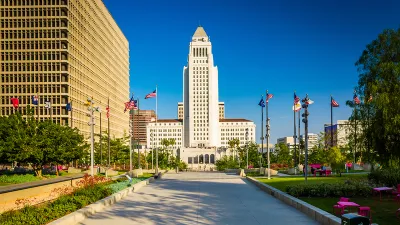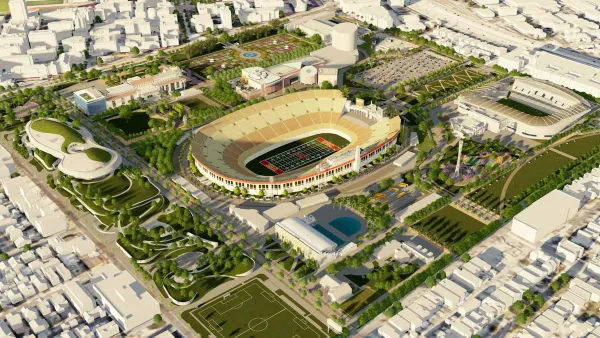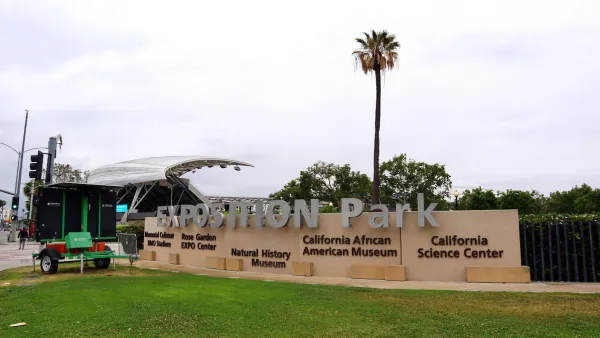A pointed editorial decries the over-regulation that has followed the renaissance of public spaces in Los Angeles.

"In recent years, Los Angeles has invested mightily in its public spaces in efforts to create a 'world class city,'" according to an op-ed by Laura Barraclough. "Great Streets Initiative, to the pop-up parklets and plazas being created along the L.A. River and all around the city, a certain energy around a revitalized public sphere pervades the air," adds Barraclough.
Despite these high profile efforts, however, Barraclough sees reasons to wonder whether the city is living up to its potential—or its promises. She writes: "From the loudly-hyped debut of Grand Park, to Mayor Eric Garcetti's Great Streets Initiative, to the pop-up parklets and plazas being created along the L.A. River and all around the city, a certain energy around a revitalized public sphere pervades the air. Much has been made of the design element of this revitalization, which is crucial, but little has been said of its legal architecture: the hundreds of municipal codes that regulate the city’s public spaces, often in exclusionary ways."
Barraclough lists a surprising inventory of regulations of these spaces, made in the name of public safety. Nearby jurisdictions are just as likely to enact exclusionary regulations. A new dog park in Beverly Hills, for example, will only be open to the city's residents.
After listing several reasons why such regulations unfairly exclude populations that need the space the most, Barraclough goes on to cite Jane Jacobs and William Whyte in presenting a case for more democratic use of public spaces.
FULL STORY: If L.A. wants to be a world class city, it needs to stop micromanaging its public spaces

National Parks Layoffs Will Cause Communities to Lose Billions
Thousands of essential park workers were laid off this week, just before the busy spring break season.

Retro-silient?: America’s First “Eco-burb,” The Woodlands Turns 50
A master-planned community north of Houston offers lessons on green infrastructure and resilient design, but falls short of its founder’s lofty affordability and walkability goals.

Delivering for America Plan Will Downgrade Mail Service in at Least 49.5 Percent of Zip Codes
Republican and Democrat lawmakers criticize the plan for its disproportionate negative impact on rural communities.

Test News Post 1
This is a summary

Test News Headline 46
Test for the image on the front page.

Balancing Bombs and Butterflies: How the National Guard Protects a Rare Species
The National Guard at Fort Indiantown Gap uses GIS technology and land management strategies to balance military training with conservation efforts, ensuring the survival of the rare eastern regal fritillary butterfly.
Urban Design for Planners 1: Software Tools
This six-course series explores essential urban design concepts using open source software and equips planners with the tools they need to participate fully in the urban design process.
Planning for Universal Design
Learn the tools for implementing Universal Design in planning regulations.
EMC Planning Group, Inc.
Planetizen
Planetizen
Mpact (formerly Rail~Volution)
Great Falls Development Authority, Inc.
HUDs Office of Policy Development and Research
NYU Wagner Graduate School of Public Service




























